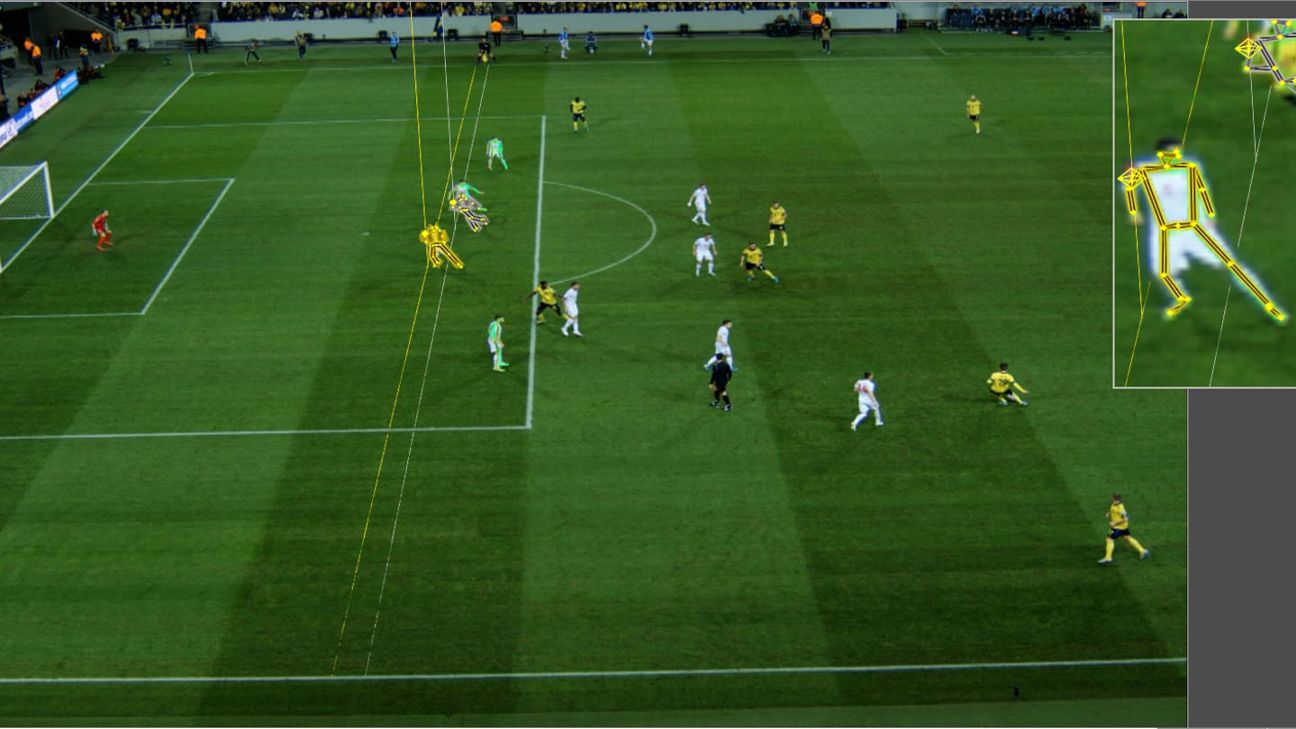[ad_1]

The Premier League has confirmed that it will introduce semi-automated VAR offside technology (SAOT) next season — but it won’t be in place for the start of the campaign.
A source has told ESPN that the Premier League is to part ways with Hawk-Eye, the current provider of offside technology, and the replacement company will not be ready with SAOT in August as additional testing is required.
Extensive testing and analysis has been conducted throughout this season but SAOT will not be available until after one of the three Autumn international breaks — though there’s no confirmation if that will be in September, August or November as the Premier League wants to be sure the technology is reliable.
A statement read: “At a Premier League Shareholders’ meeting today, clubs unanimously agreed to the introduction of Semi-Automated Offside Technology.
“The new system will be used for the first time in the Premier League next season, and it is anticipated the technology will be ready to be introduced after one of the Autumn international breaks.
“The technology will provide quicker and consistent placement of the virtual offside line, based on optical player tracking, and will produce high-quality broadcast graphics to ensure an enhanced in-stadium and broadcast experience for supporters.”
SAOT was first introduced by UEFA for the group stage of the 2022-23 UEFA Champions League, with FIFA also using it for the 2022 FIFA World Cup in Qatar.
Serie A was the first European domestic league to switch to SOAT, introducing it in January 2023 after a high profile VAR error early in that campaign had seen an injury time winning goal for Juventus incorrectly disallowed. LaLiga had already announced it would introduce SAOT for the 2024-25 season, with the Premier League to follow shortly after.
The Premier League has suffered a number of high-profile offside errors in the last year. In February, the VAR had failed to identify that a Brentford player was offside in the buildup to a goal at Arsenal. On the same day, the lines had been placed on the wrong Crystal Palace defender, leading to a Brighton & Hove Albion goal incorrectly being disallowed.
And in October, Liverpool had a goal ruled out for offside on the field at Tottenham Hotspur which the VAR mistakenly failed to correct. However, the error on the Luis Díaz goal was primarily around communication rather than the technology, so SAOT in itself wouldn’t fix this.
The errors have caused additional delays to offside decisions as VARs double check their work.
The system uses 12 bespoke cameras installed under the stadium roof and not the standard television cameras, as is the case right now. It enables a much more accurate assessment of when a pass has been played, and tracks 29 data points on the players to create an AI model of the offside situation. The technology sends an alert if there is a player in an offside position, then the VAR must ratify the decision and/or determine if the player has an impact on play.
SOAT removes the manual element of detecting when the ball has been kicked and placing the lines onto both players and to pitch level, making it quicker and more accurate. The manual crosshair placement remains available as a backup in event of SAOT failure.
Increased confidence in decision-making and reduced reliance on checking all situations is intended to reduce the likelihood of a potential offside being missed by the VAR — removing possible associated human error. The Premier League believes that an average of 31 seconds will be saved on each VAR check by the removal of the manual process.
SAOT also provides a much-improved graphical visualisation of an offside decision, rather than the current method of displaying lines on the broadcast camera.
[ad_2]
Source link










